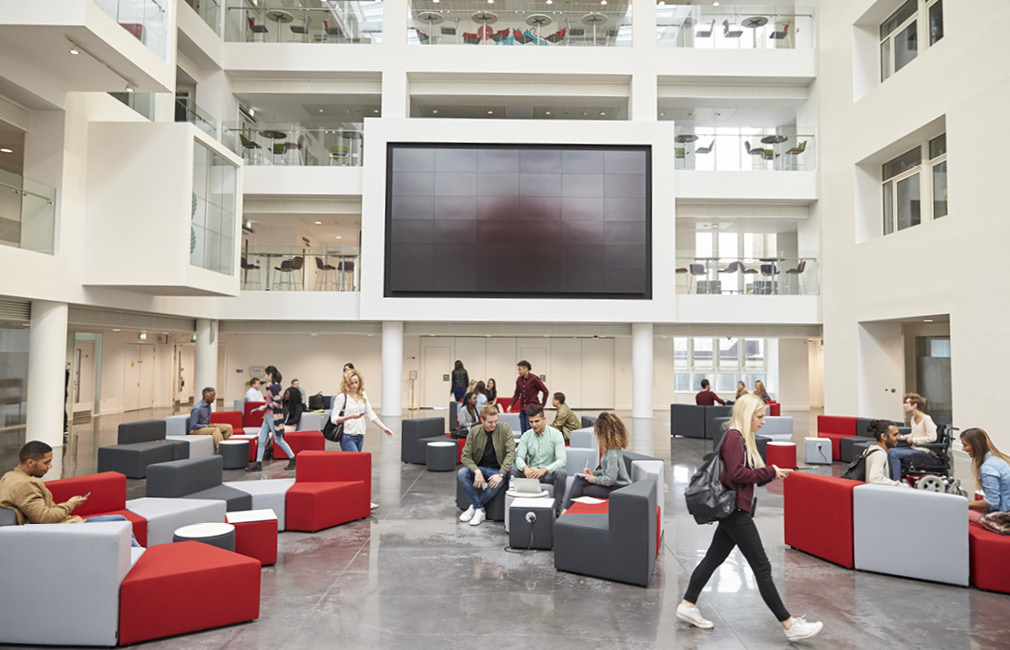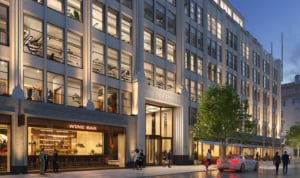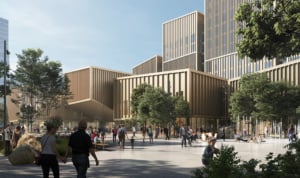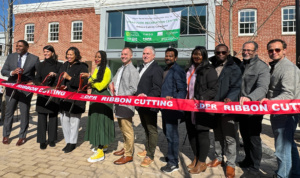Market Challenges for Updating Higher Education Campuses

Sourced from Student Housing Business
by Sarah Eynon, Senior Director, MGAC
July 11, 2023
As campus life settled into its new normal this past year, higher education administrations have been reassessing their capital, real estate, and student experience strategies to remain resilient and meet expected standards in technology, efficiency, and sustainability. As in most other industries, the pandemic accelerated longer-term trends, particularly when it came to uses of technology and flexible facilities. At the same time, it has driven an increase in construction costs and led to less predictable project timelines—all of which has made planning even more important.
As development projects resumed across North America, we have seen campuses striving to offer new, more intricate technology to fit modern student, faculty, and operational demands. Of course, it is difficult to predict future technological requirements. To be resilient, facilities must be future-proofed and ready to adapt to emerging trends, such as the rise of interdisciplinary studies, hybrid learning, building automation, and other advances that will increase demands on institutions’ bandwidths and infrastructures.
The leaders of educational institutions need to implement comprehensive approaches to construction development which focus on minimizing costs, green building, and anticipating technological and material changes. In addition to the usual capital expenditures, budgets must now include detailed line items to account for future priorities—especially as inflation and supply chain issues exacerbate a wider trend of rising capital costs.
Facility leaders and real estate heads are also recognizing that investment in new technologies today can help avoid greater costs down the road. For example, the use of smart building technologies, such as temperature controls, helps reduce operational costs for campuses. A November 2022 report found that the majority of campuses have issues with building temperature control. The maintenance of HVAC is one of the most expensive operational costs for universities, and electricity and gas rates are unpredictable. Failing HVAC systems and the overuse of climate control can lead to very high costs and pose sustainability concerns.
The study also notes that the pandemic has shifted the dynamic between institution leaders and campus facility professionals. Formerly underutilized, facility professionals now have real opportunities to influence the future of campus real estate decisions. Here are some factors they will be considering in the coming years:
Planning Ahead to Mitigate Delays
Since the pandemic, campus real estate and construction teams have run into roadblocks when gathering materials for new buildings, due to supply chain issues and labor shortages. Meanwhile, institutions have been emphasizing the need for new, state-of-the-art facilities to remain competitive to attract new students; the U.S. has seen a 4.31% decline in university enrollment year over year from 2020.
Administrators have always had to be diligent in evaluating their approach to modernization and amenity projects, especially when weighing costs against enrollment and endowments. Now, they need to adapt to spending more on materials in the early stages of development to mitigate the impacts of potential delays down the road.
Educational Changes Impact Facilities
Changing approaches to teaching and shifts in various academic fields are altering campus planning and design. We are seeing less strict boundaries between disciplines, meaning that it’s no longer sufficient to have, say, one building for Physics and a one for Chemistry, housed in completely independent facilities. Interdisciplinary studies and research mean there’s a greater demand for flexible spaces, powerful wireless connectivity, and other technologies to facilitate hybrid working.
This is especially true for colleges and universities that employ laboratory spaces. There has been a move from single-use to shared laboratory concepts in which research teams from multiple departments or disciplines are encouraged to work together in shared offices, by schedule. As equipment used by these teams is often expensive to procure and difficult to move, condensing laboratory space and creating flexible spaces that can be adapted for additional classes and meetings are now key considerations in campus design.
Planning Around Historic Architecture
A challenge unique to this sector, but faced by many schools, is how to work with historic campus buildings that can be so vital to their appeal to students, alumni, and donors. Campuses often need to perform cost-benefit analyses to determine their best course of action: should they attempt to retrofit an architecturally significant building with minimal structural change, expand an existing building, or build a brand-new facility elsewhere?
Sustainability, technology, and cost management concerns are making these decisions increasingly complex. While it’s often said that the most sustainable building is the one you don’t have to build (due to the carbon footprint of construction), green upgrades and cost pressures require more efficiency and monitoring. U.S. states and Canadian provinces have specific mandates and codes around incorporating new, green technology into historic buildings. There is a high premium for schools to renovate such buildings; while aiming to meet their carbon footprint and accessibility criteria, they must be careful to keep prized heritage features intact.
On the technology side, there is an advantage to utilizing existing structures: as campuses adopt automated interfaces and more expansive WiFi connectivity, they can make use of existing infrastructure. As an example, many old buildings are made of layered concrete and brick, which creates dark zones in which students and faculty lose access to cellular phone and internet signals. This can pose challenges to collaboration if they cannot connect to a hard-wired computer. Fiber optic WiFi can help to circumvent the issue, especially to help bridge the access gap while buildings are either being renovated or constructed.
Attracting Capital
Broader moves towards Net-Zero Energy and Net-Zero Carbon in the built environment are also becoming more influential on long-term capital cost plans, especially as investors and donors are increasingly taking ESG into account for their own capital decisions. They need to know that the projects to which they allocate funding are meeting certain benchmarks, which are also starting to be codified similarly to LEED® and WELL standards. Campuses need to be planned appropriately to meet capital standards in the future.
Overall, we will see through lines of agility and flexibility for the foreseeable future which, paradoxically, necessitates planning for the unexpected. Resources and strategies brought to bear on today’s campus developments can safeguard the health and viability of institutions long-term.








